Design of Broadband High-Gain Fabry–Pérot Antenna Using Frequency-Selective Surface
Abstract
1. Introduction
2. Theoretical Analysis and Unit Design
2.1. Fabry–Pérot Resonant Cavity Theory
2.2. Selection of Feed Antenna
2.3. Design of Positive Gradient Reflection FSS Unit
2.4. Design of F-P Resonant Cavity Antenna
3. Experimental Verification
4. Conclusions
Author Contributions
Funding
Institutional Review Board Statement
Informed Consent Statement
Data Availability Statement
Conflicts of Interest
References
- Qu, S. Broadband Millimeter-Wave Short Backfire Antenna with Bowtie Exciter. IEEE Antennas Wirel. Propag. Lett. 2012, 11, 850–853. [Google Scholar]
- Muhammad, S.A.; Sauleau, R.; Le Coq, L.; Legay, H. Self-Generation of Circular Polarization Using Compact Fabry–Pérot Cavity Antennas. IEEE Antennas Wirel. Propag. Lett. 2011, 10, 907–910. [Google Scholar] [CrossRef]
- Ge, Y.; Esselle, K.P.; Bird, T.S. The Use of Simple Thin Partially Reflective Surfaces with Positive Reflection Phase Gradients to Design Wideband, Low-Profile EBG Resonator Antennas. IEEE Trans. Antennas Propag. 2012, 60, 743–750. [Google Scholar] [CrossRef]
- Wang, T.; Ge, Y.; Chang, J.; Wang, M. Wavelength-Interrogation Fabry-Perot Refractive Index Sensor Based on a Sealed In-Fiber Cavity. IEEE Photonics Technol. Lett. 2016, 28, 3–6. [Google Scholar] [CrossRef]
- Wang, N.; Li, J.; Wei, G.; Talbi, L.; Zeng, Q.; Xu, J. Wideband Fabry–Pérot Resonator Antenna with Two Layers of Dielectric Superstrates. IEEE Antennas Wirel. Propag. Lett. 2015, 14, 229–232. [Google Scholar] [CrossRef]
- Zeb, B.A.; Ge, Y.; Esselle, K.P.; Sun, Z.; Tobar, M.E. A Simple Dual-Band Electromagnetic Band Gap Resonator Antenna Based on Inverted Reflection Phase Gradient. IEEE Trans. Antennas Propag. 2012, 60, 4522–4529. [Google Scholar] [CrossRef]
- Wang, N.; Liu, Q.; Wu, C.; Talbi, L.; Zeng, Q.; Xu, J. Wideband Fabry-Perot Resonator Antenna with Two Complementary FSS Layers. IEEE Trans. Antennas Propag. 2014, 62, 2463–2471. [Google Scholar]
- Gardelli, R.; Albani, M.; Capolino, F. Array thinning by using antennas in a Fabry–Pérot cavity for gain enhancement. IEEE Trans. Antennas Propag. 2006, 54, 1979–1990. [Google Scholar] [CrossRef]
- Al-Gburi, A.J.A.; Ibrahim, I.B.M.; Zeain, M.Y.; Zakaria, Z. Compact Size and High Gain of CPW-Fed UWB Strawberry Artistic Shaped Printed Monopole Antennas Using FSS Single Layer Reflector. IEEE Access 2020, 8, 92697–92707. [Google Scholar] [CrossRef]
- Melouki, N.; Hocini, A.; Fegriche, F.Z.; PourMohammadi, P.; Naseri, H.; Iqbal, A.; Denidni, T.A. High-Gain Wideband Circularly Polarised Fabry-Perot Resonator Array Antenna Using a Single-Layered Pixelated PRS for Millimetre-Wave Applications. Micromachines 2022, 13, 1658. [Google Scholar] [CrossRef]
- Alwareth, H.; Ibrahim, I.M.; Zakaria, Z.; Al-Gburi, A.J.A.; Ahmed, S.; Nasser, Z.A. A Wideband High-Gain Microstrip Array Antenna Integrated with Frequency-Selective Surface for Sub-6 GHz 5G Applications. Micromachines 2022, 13, 1215. [Google Scholar] [CrossRef] [PubMed]
- Hosseini, A.; Capolino, F.; de Flaviis, F. Gain enhancement of a V-band antenna using a Fabry–Pérot cavity with a self-sustained all-metal cap with FSS. IEEE Trans. Antennas Propag. 2015, 63, 909–921. [Google Scholar] [CrossRef]
- Attia, H.; Abdelghani, M.L.; Denidni, T.A. Wideband and High-Gain Millimeter-Wave Antenna Based on FSS Fabry-Perot Cavity. IEEE Trans. Antennas Propag. 2017, 65, 5589–5594. [Google Scholar] [CrossRef]
- Garg, R.; Bhartia, P.; Bahl, I.; Ittipiboon, A. Microstrip Antenna Design Handbook; Artech House: Norwood, MA, USA, 2001; Chapter 1; pp. 43–47. [Google Scholar]
- Gallinet, B.; Martin, O.J.F. Influence of electromagnetic interactions on the line shape of plasmonic Fano resonances. ACS Nano 2011, 5, 8999–9008. [Google Scholar] [CrossRef] [PubMed]
- Kanjanasit, K.; Wang, C.H. Fano resonance in a metamaterial consisting of two identical arrays of square metallic patch elements separated by a dielectric spacer. Appl. Phys. Lett. 2013, 102, 251108. [Google Scholar] [CrossRef]
- Singh, R.; Al-Naib, I.A.I.; Koch, M.; Zhang, W. Sharp Fano resonances in THz metamaterials. Opt. Express 2011, 19, 6312–6319. [Google Scholar] [CrossRef]
- Luk’yanchuk, B.; Zheludev, N.I.; Maier, S.A.; Halas, N.J.; Nordlander, P.; Giessen, H.; Chong, C.T. The Fano resonance in plasmonic nanostructures and metamaterials. Nat. Mater. 2010, 9, 707–715. [Google Scholar] [CrossRef]
- Leger, L.; Serier, C.; Chantalat, R.; Thevenot, M.; Monedière, T.; Jecko, B. 1D Dielectric Electromagnetic Band Gap (EBG) Resonator Antenna Design. In Annales des Telecommunications; Springer: Berlin/Heidelberg, Germany, 2004; Volume 59, pp. 242–260. [Google Scholar]
- Rajanna, P.K.T.; Rudramuni, K.; Kandasamy, K. A High-Gain Circularly Polarized Antenna Using Zero-Index Metamaterial. IEEE Antennas Wirel. Propag. Lett. 2019, 18, 1129–1133. [Google Scholar] [CrossRef]
- Huang, R.; Wang, Z.; Li, G.; Lin, C.; Ge, Y.; Pu, J. A metasurface-enabled wideband high-gain dual-circularly-polarized Fabry-Perot resonator antenna. Microw. Opt. Technol. Lett. 2020, 62, 3195–3202. [Google Scholar] [CrossRef]
- Niaz, M.W.; Yin, Y.; Bhatti, R.A.; Cai, Y.M.; Chen, J. Wideband Fabry–Pérot Resonator Antenna Employing Multilayer Partially Reflective Surface. IEEE Trans. Antennas Propag. 2021, 69, 2404–2409. [Google Scholar] [CrossRef]
- Ta, S.X.; Nguyen, T.H.Y.; Nguyen, K.K.; Dao-Ngoc, C. Bandwidth-enhancement of circularly-polarized fabry-perot antenna using single-layer partially reflective surface. Int. J. RF Microw. Comput. Aided Eng. 2019, 29, e21774. [Google Scholar] [CrossRef]
- Meriche, M.A.; Attia, H.; Messai, A.; Mitu, S.S.I.; Denidni, T.A. Directive Wideband Cavity Antenna with Single-Layer Meta-Superstrate. IEEE Antennas Wirel. Propag. Lett. 2019, 18, 1771–1774. [Google Scholar] [CrossRef]
- Dey, S.; Dey, S. Broadband high gain cavity resonator antenna using planar electromagnetic bandgap (EBG) superstrate. Int. J. Microw. Wirel. Technol. 2022, 1–12. [Google Scholar] [CrossRef]

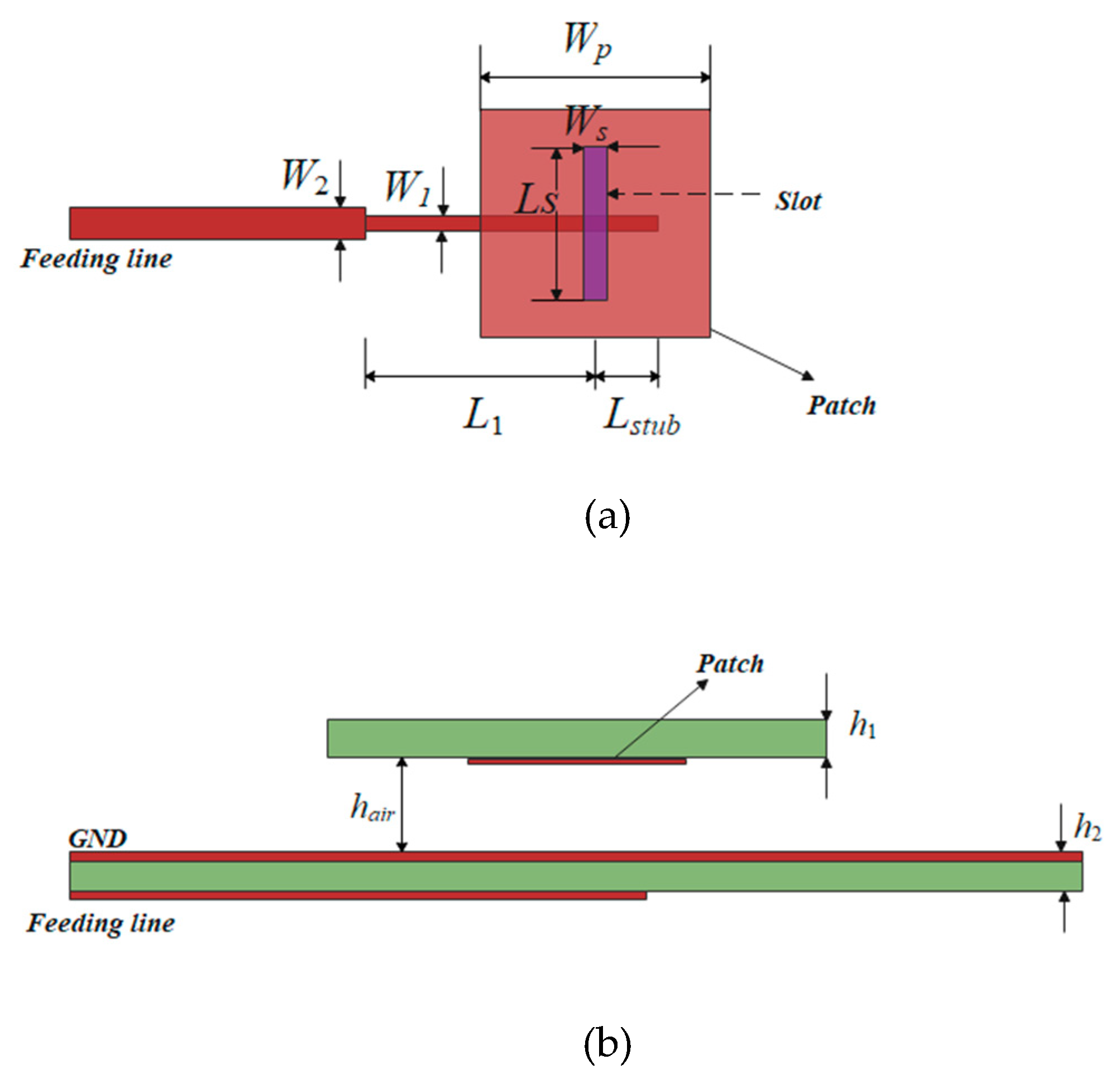
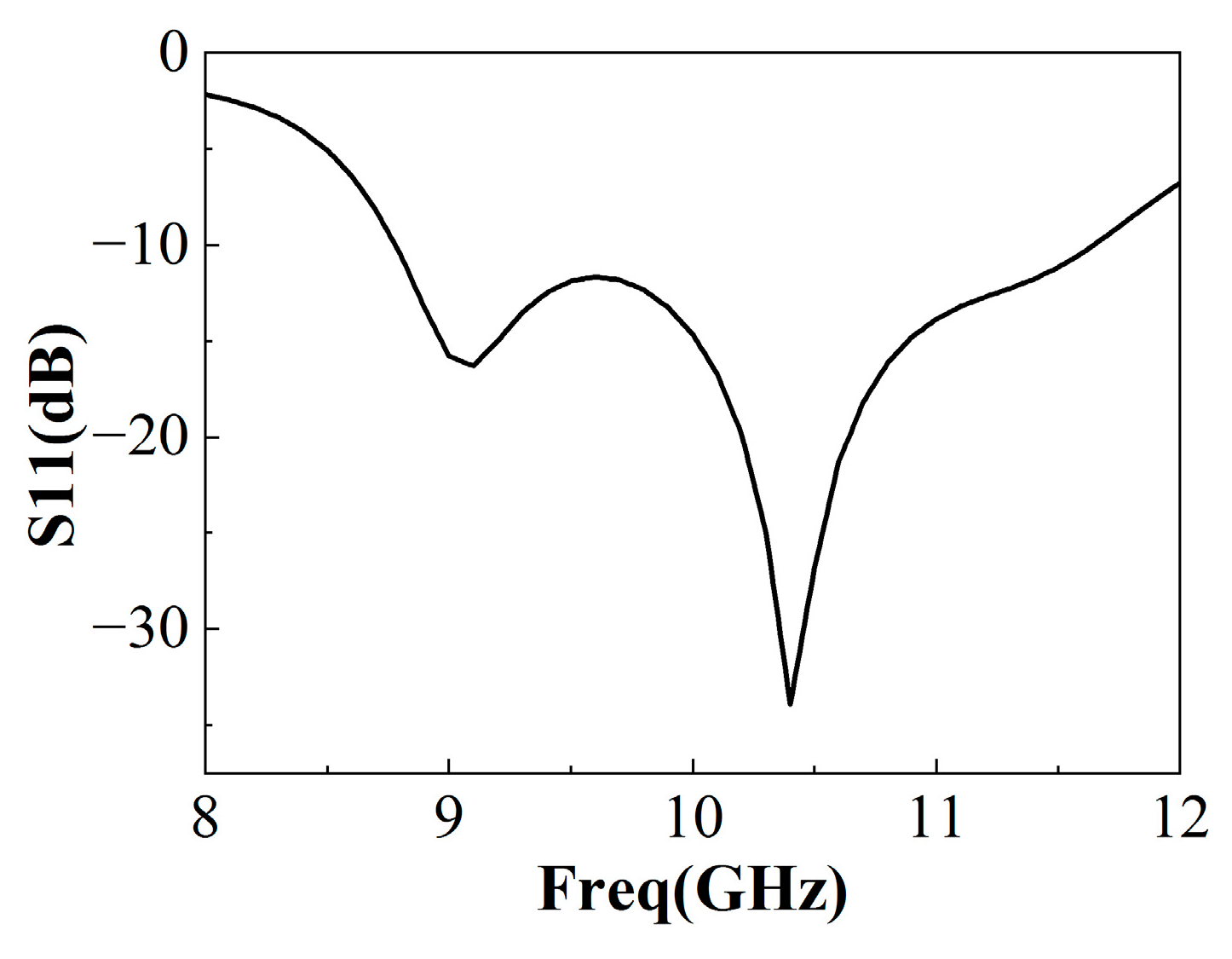


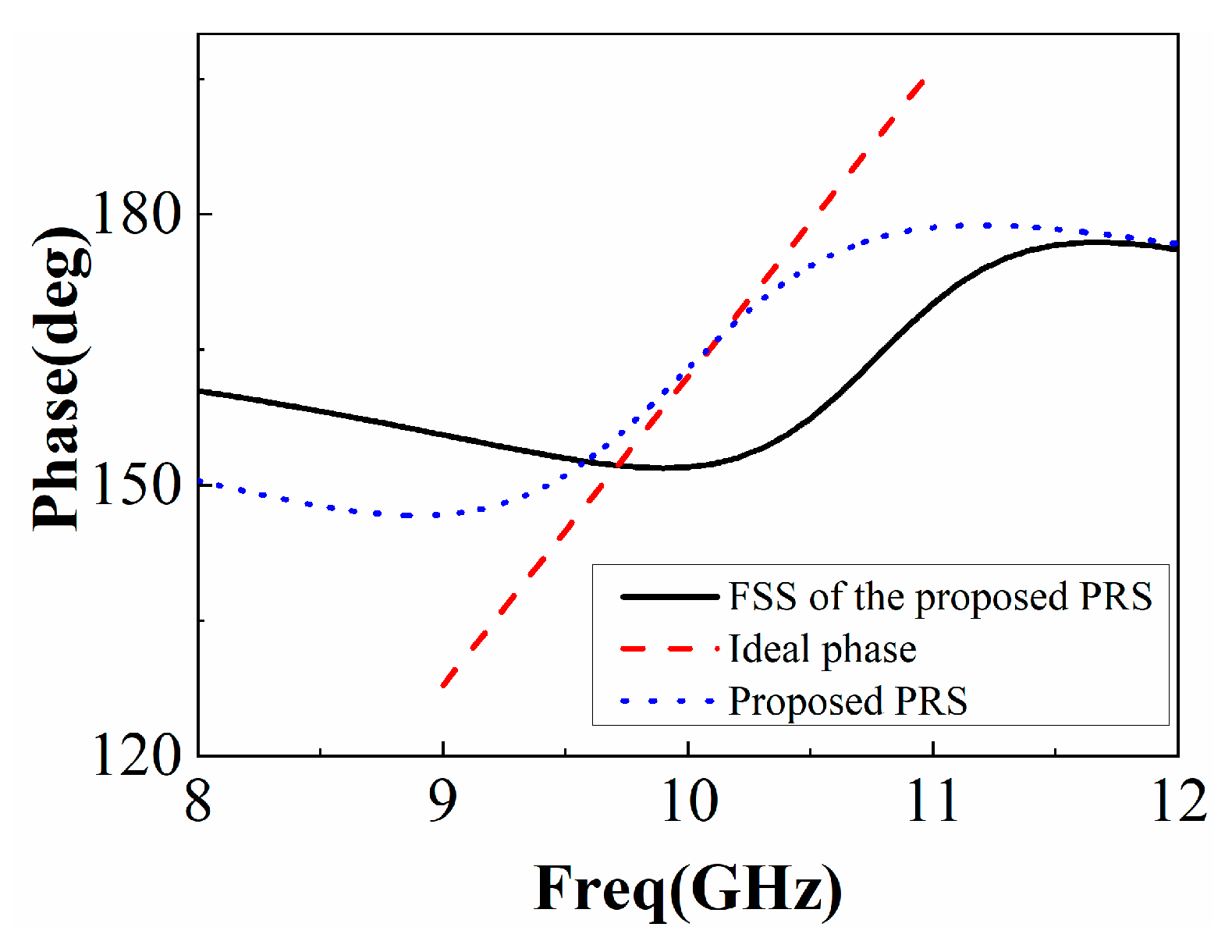
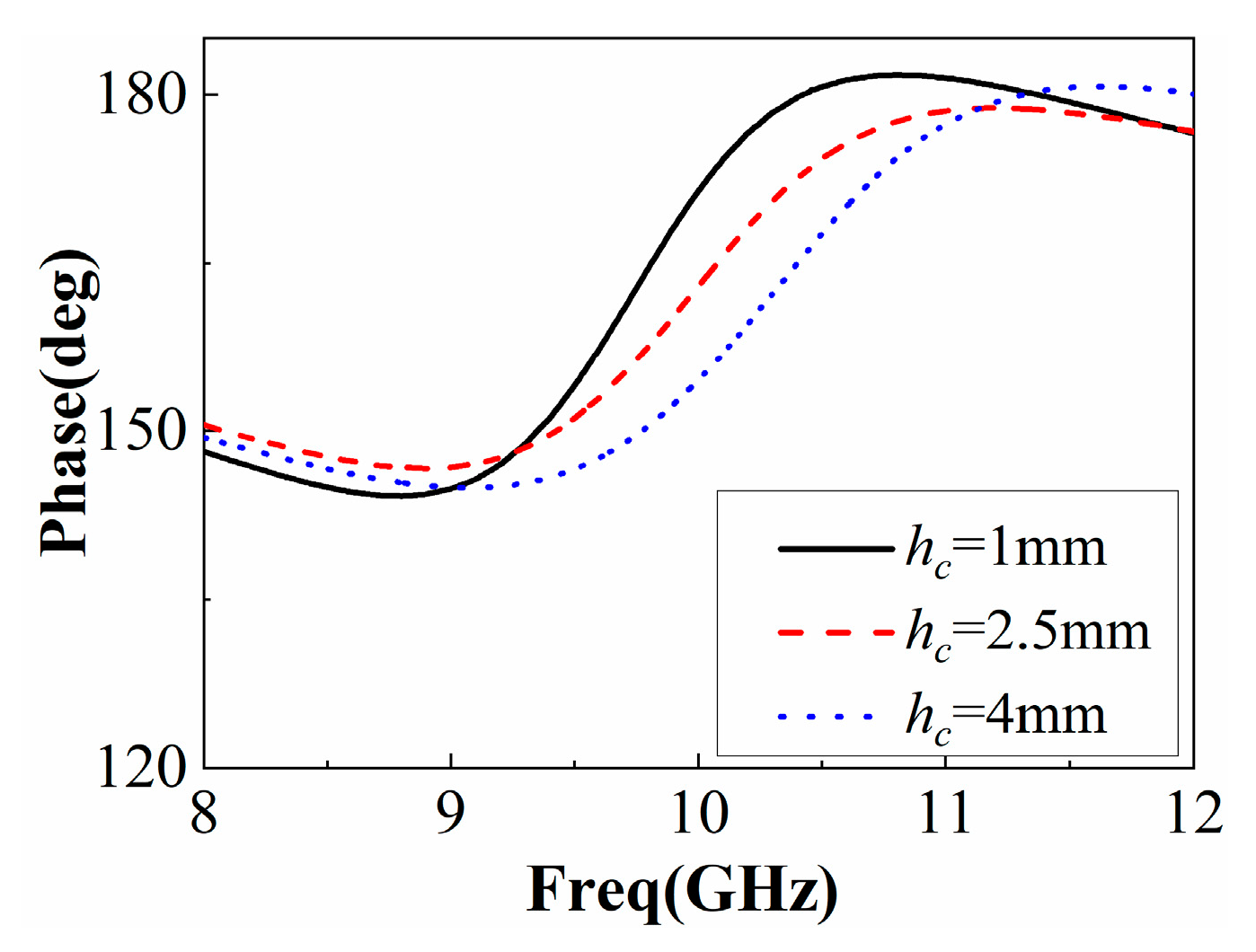

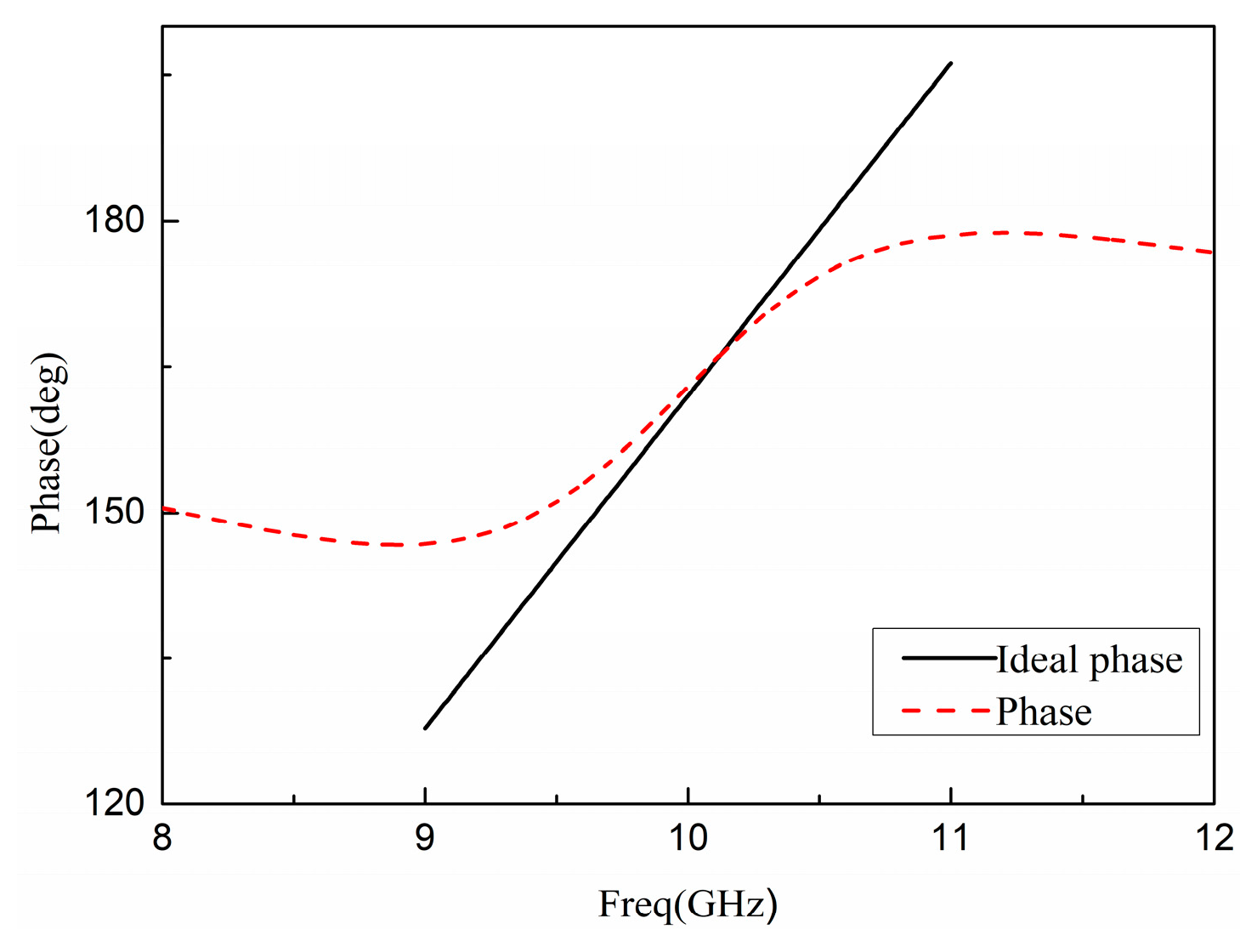
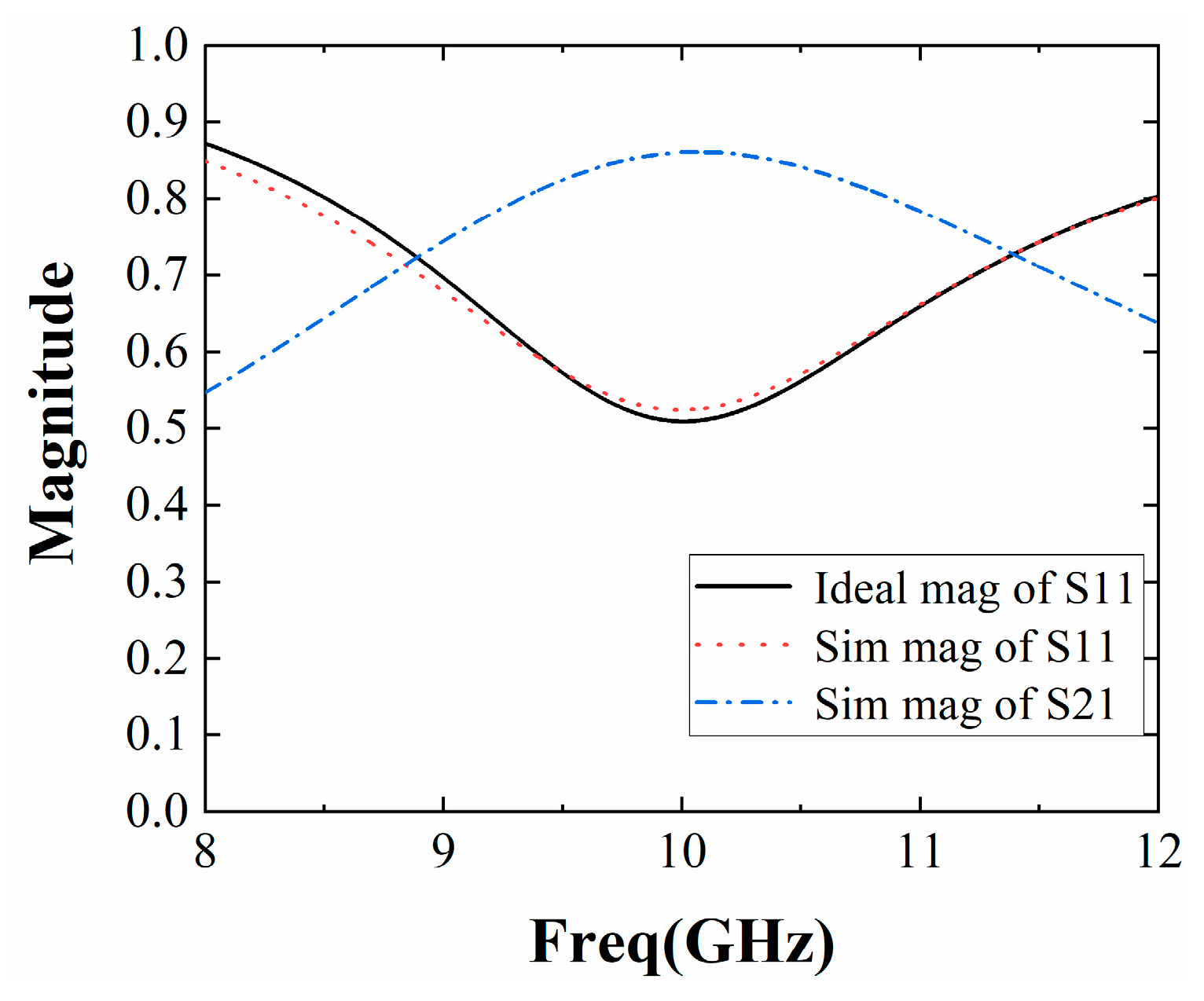

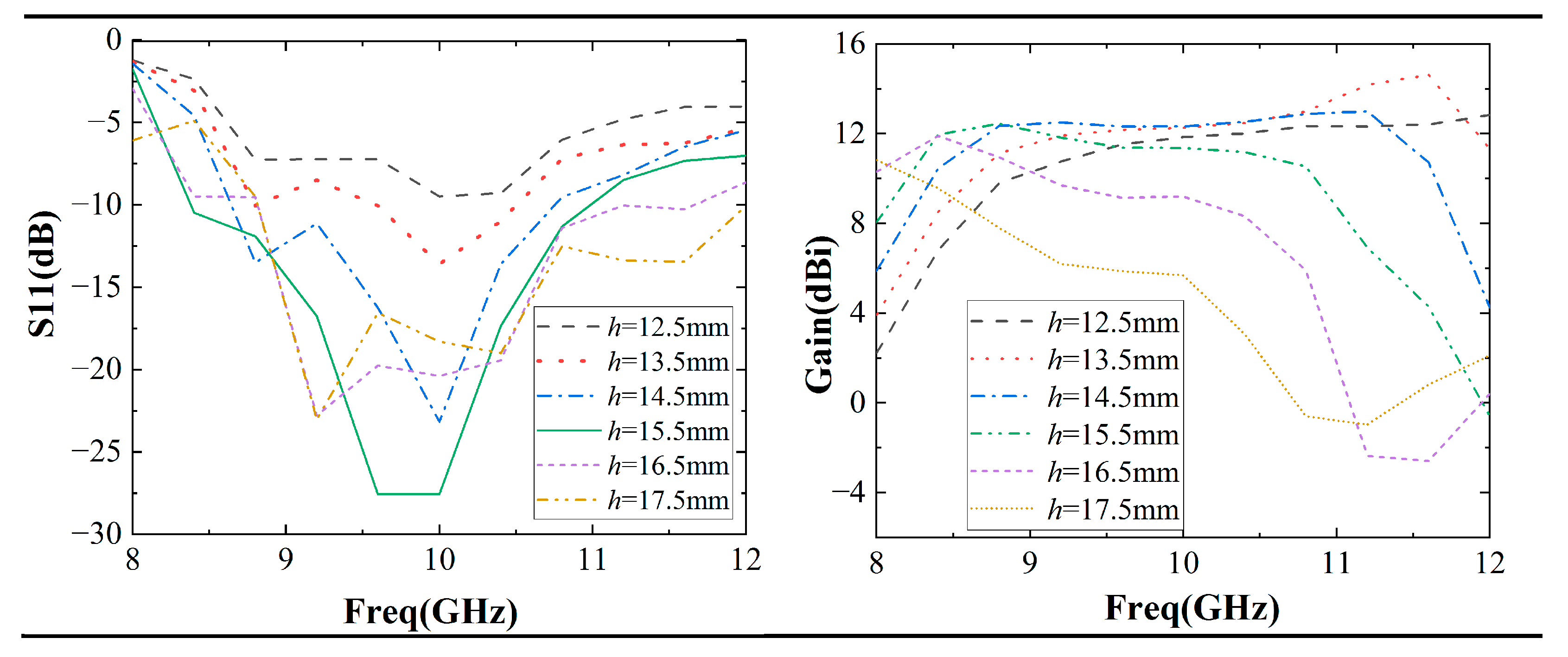
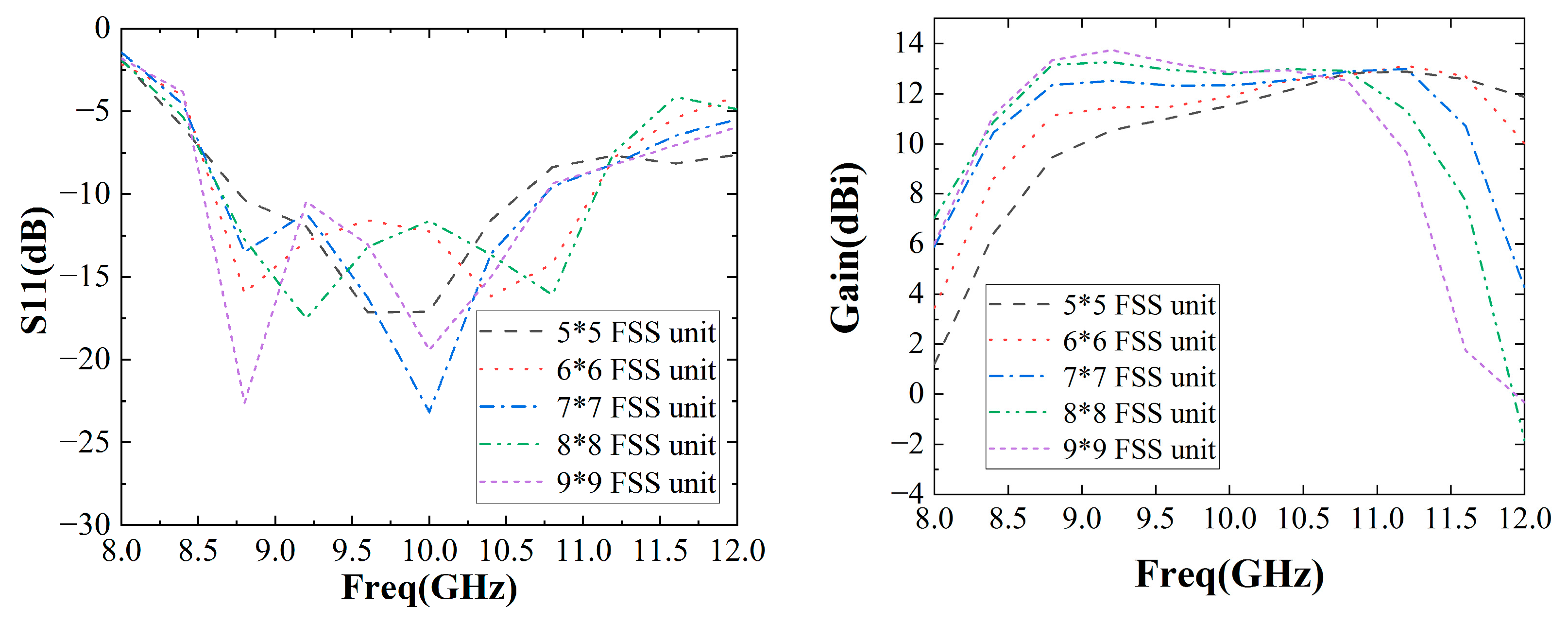
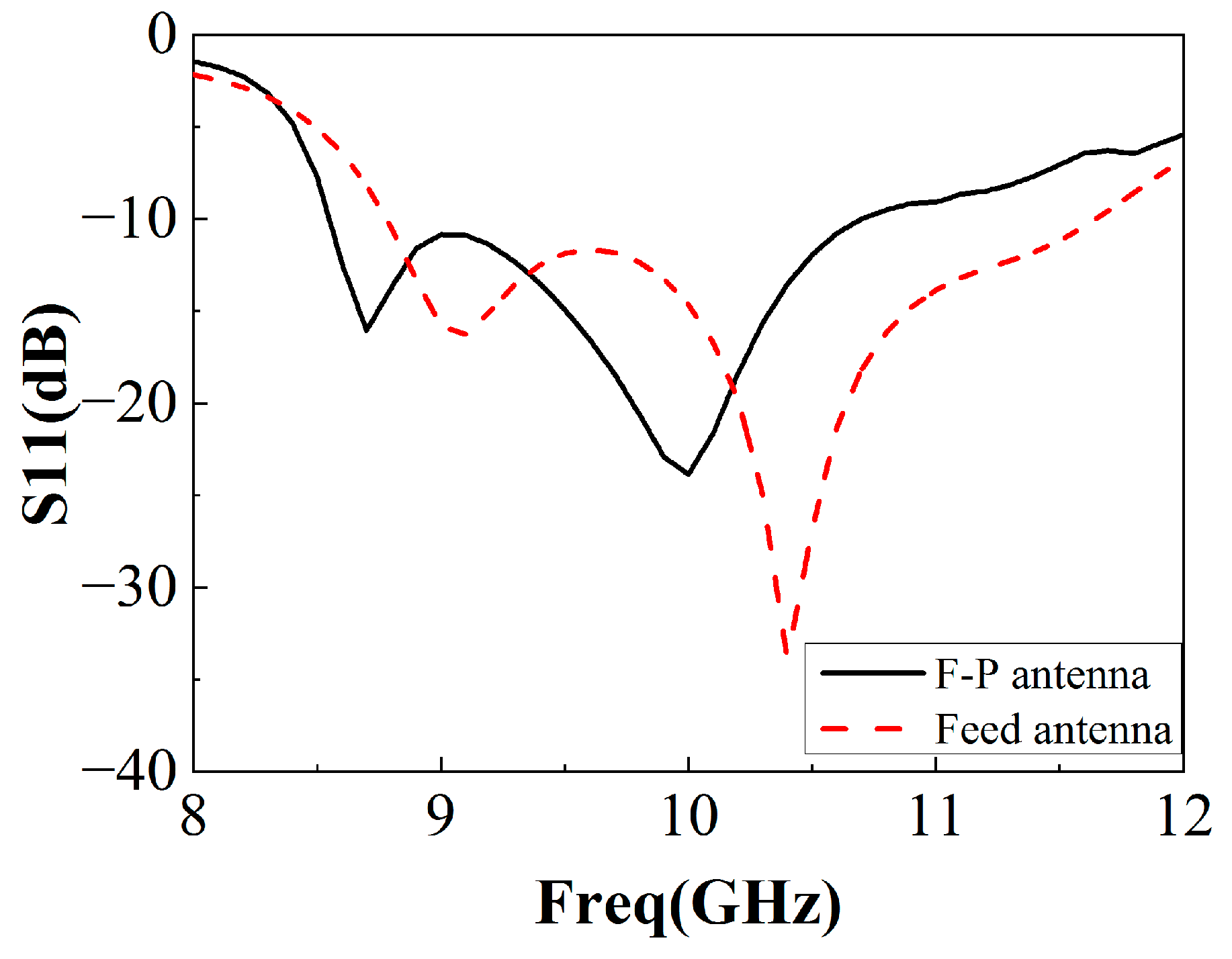
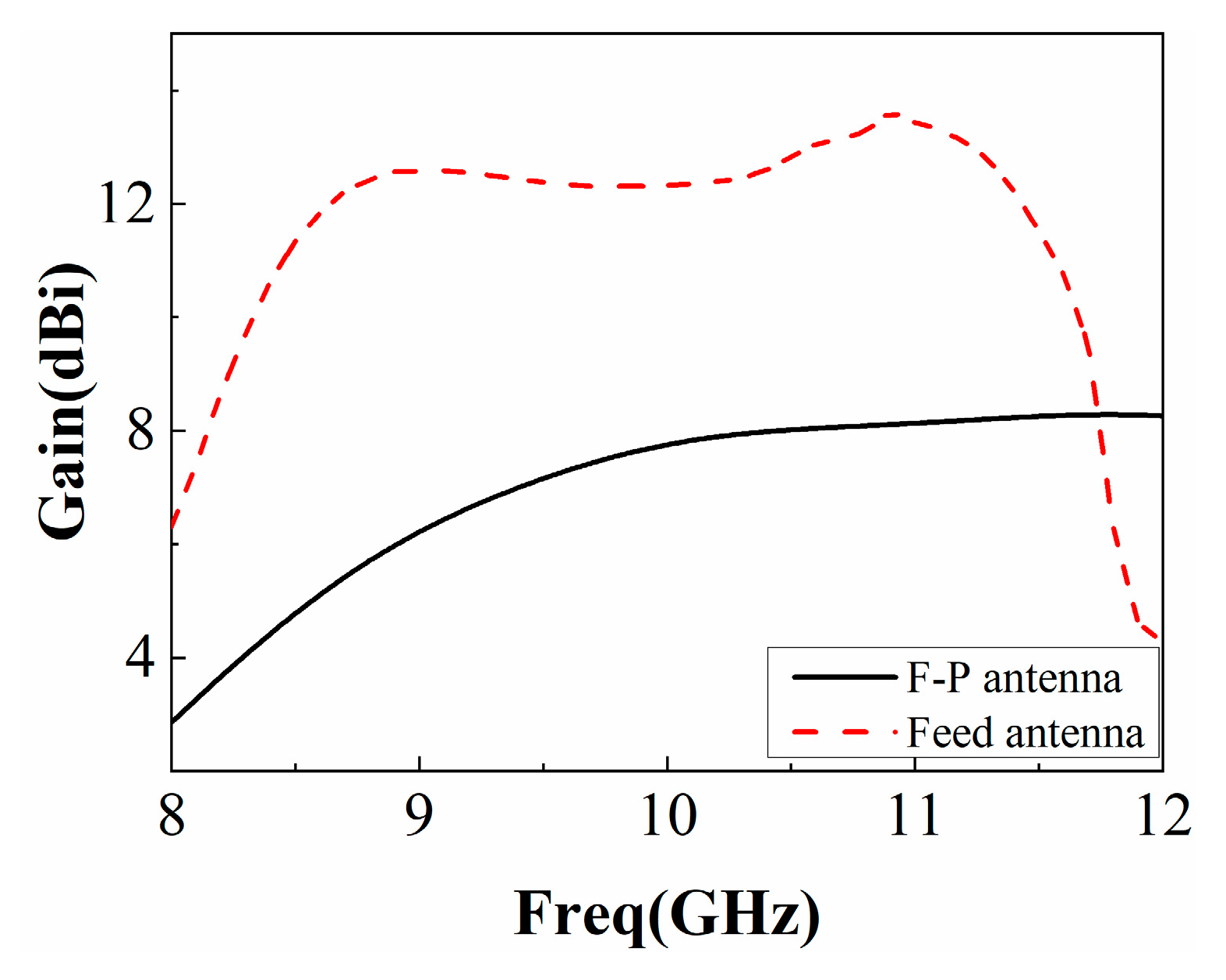

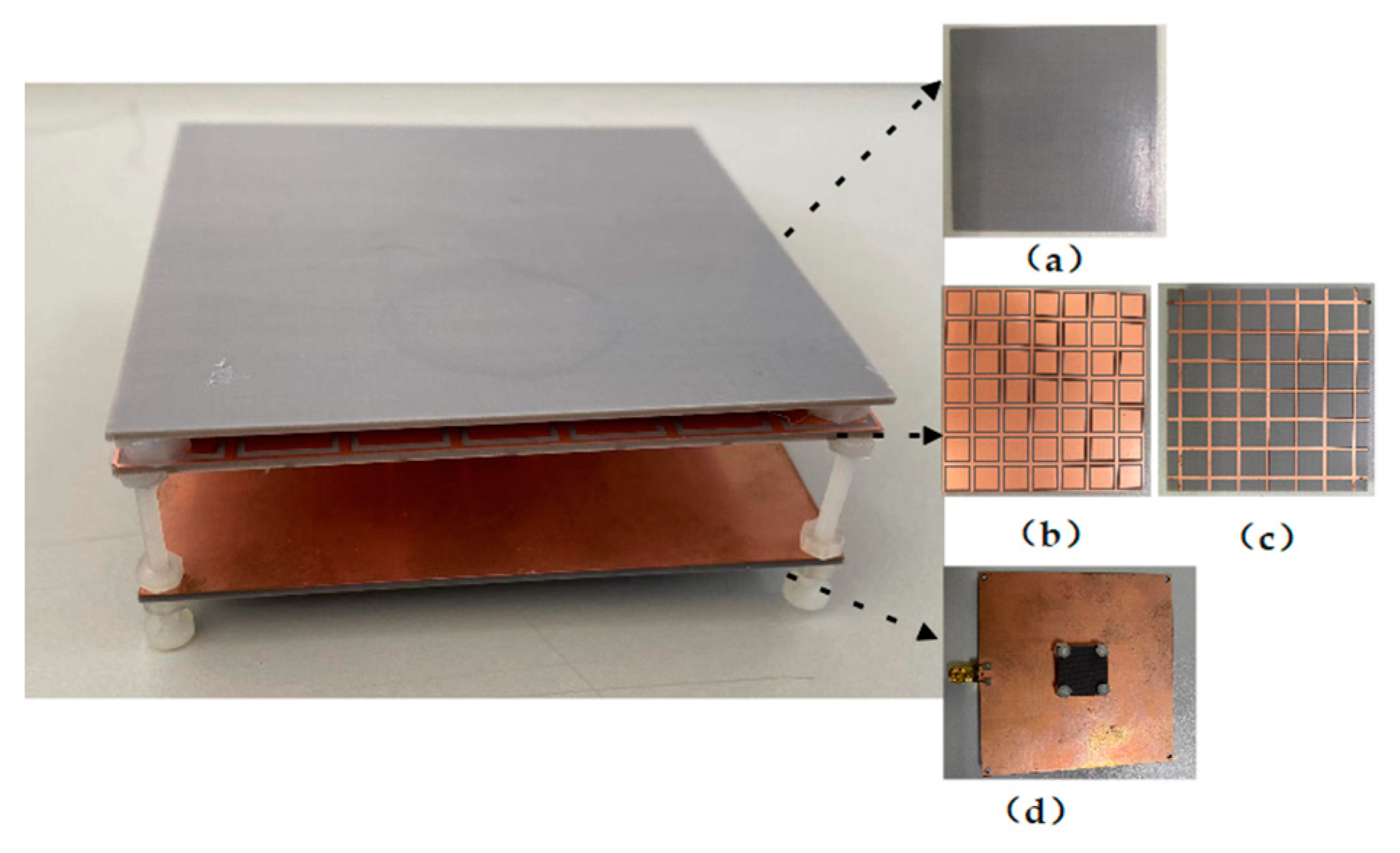
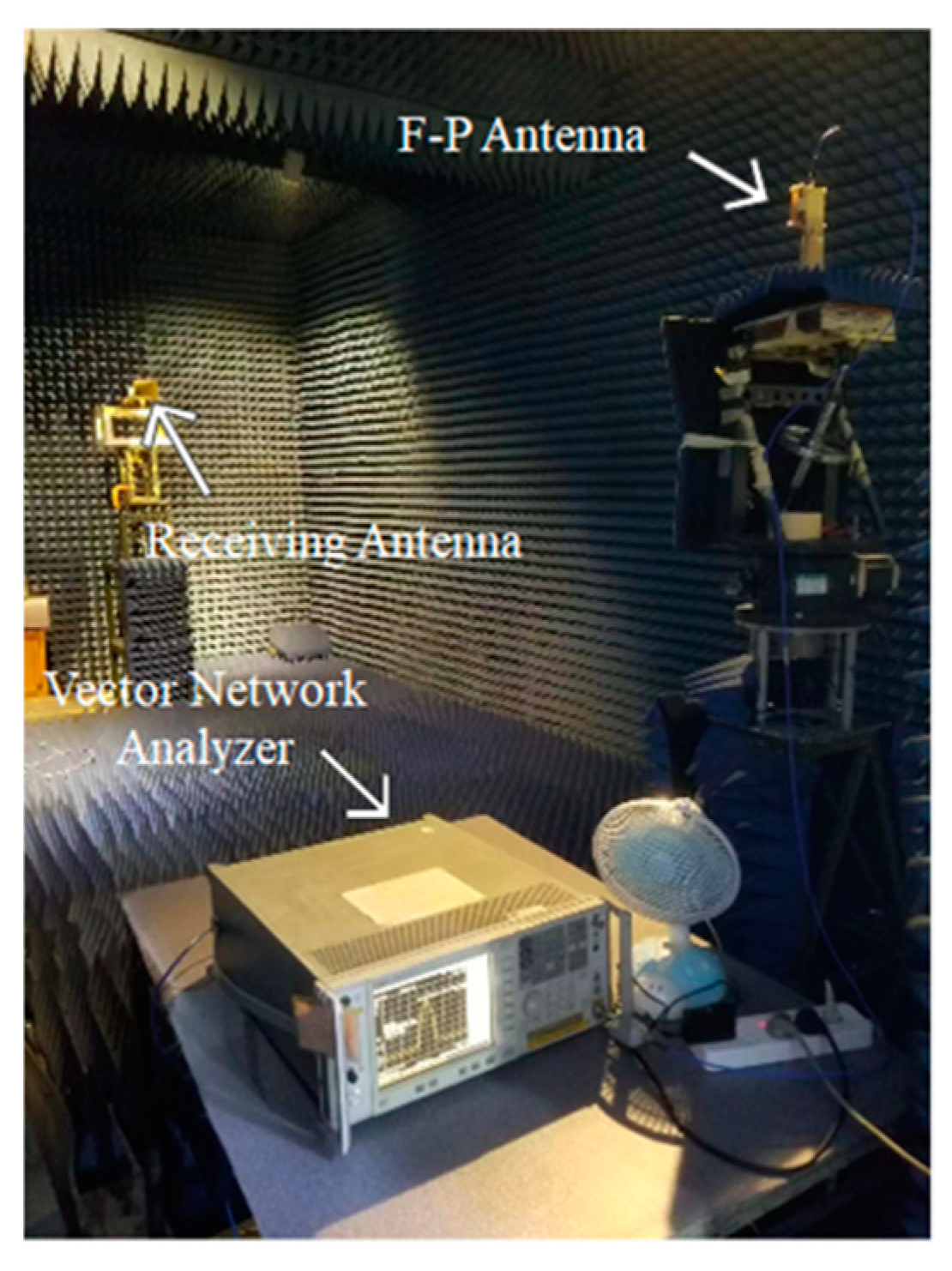

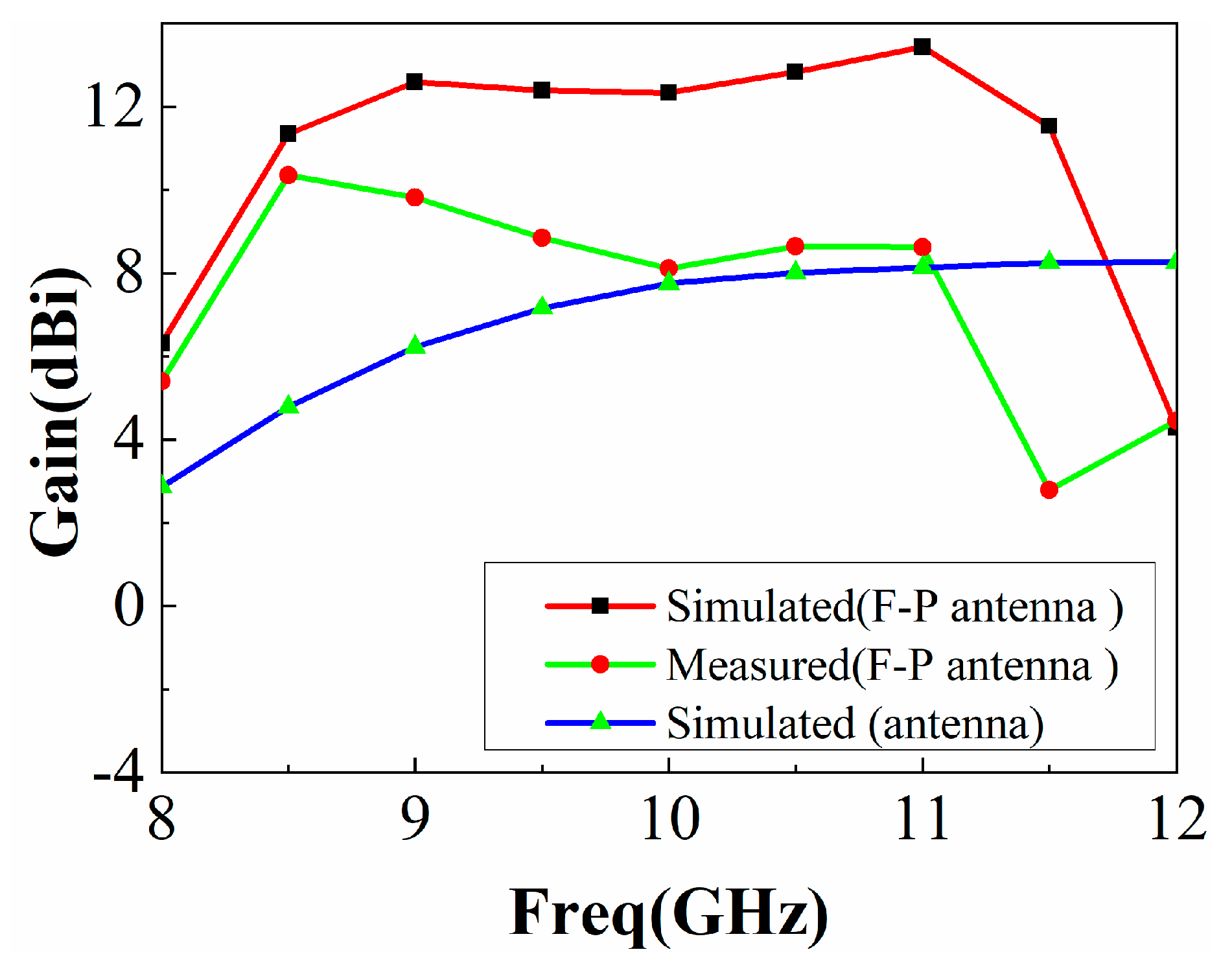
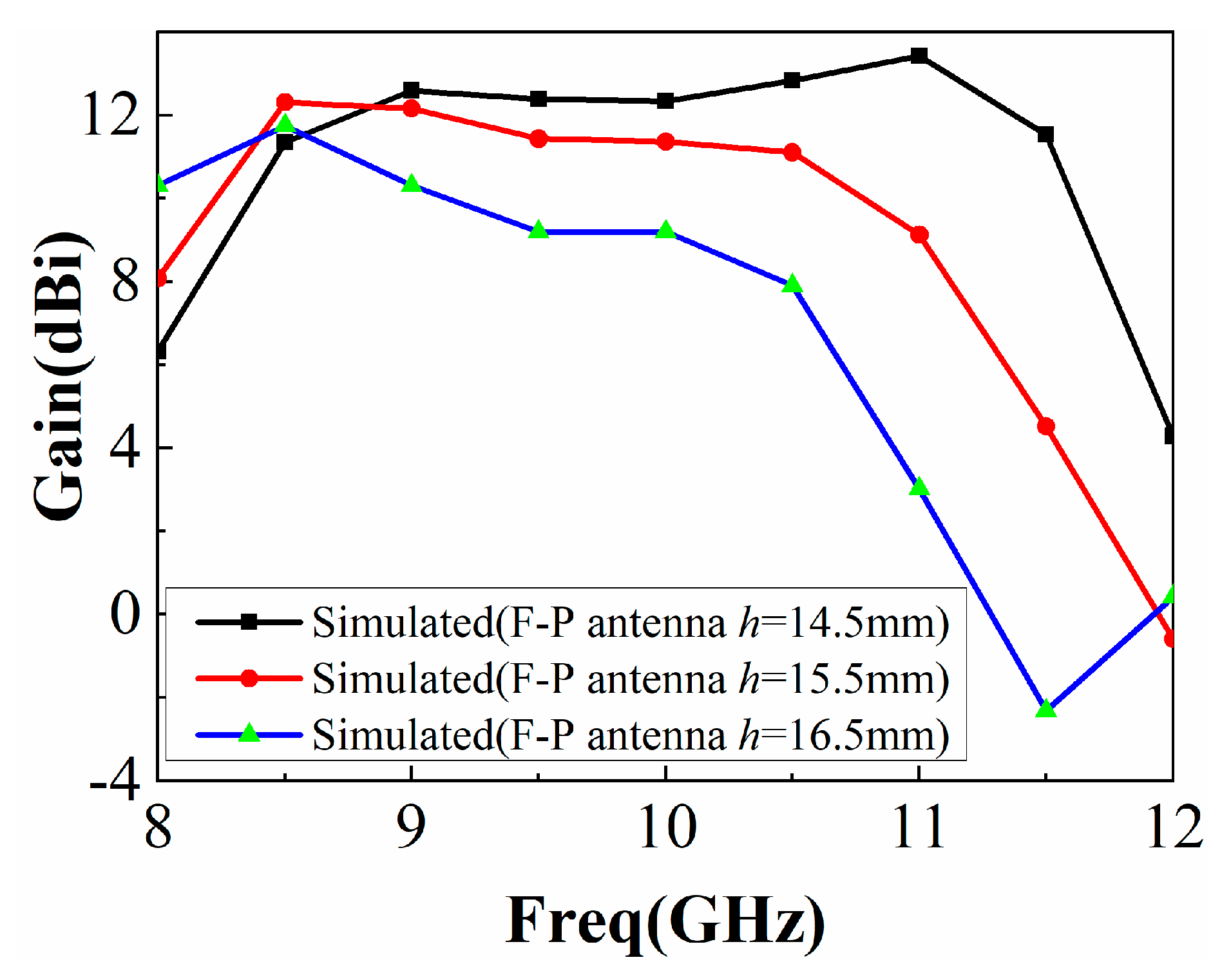

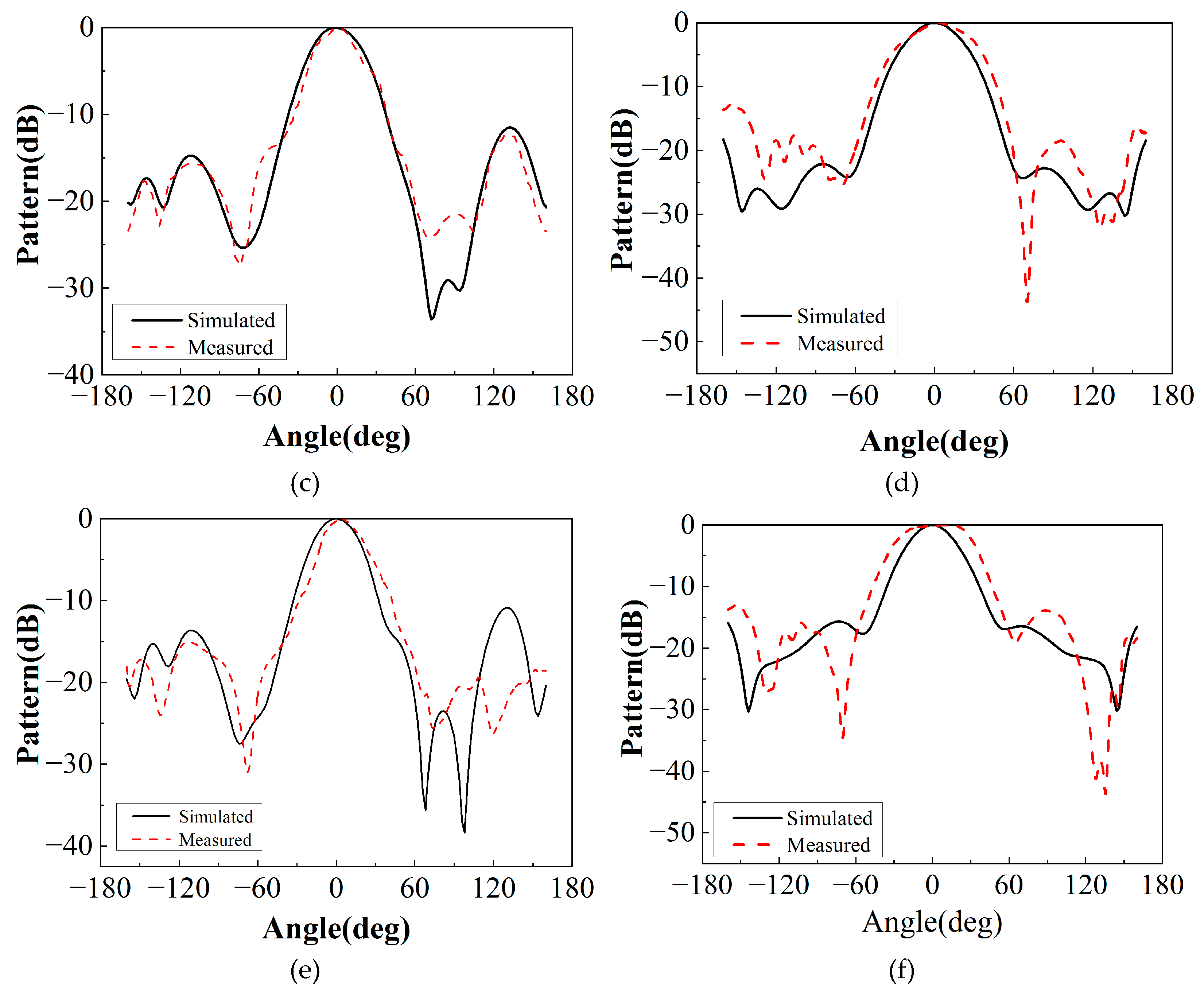
| Parameters | Values | Parameters | Values |
|---|---|---|---|
| W1 | 1.2 mm | Ws | 1 mm |
| W2 | 2.3 mm | L1 | 9.5 mm |
| WP | 8.8 mm | Lstub | 3 mm |
| hair | 3 mm | h1 | 1 mm |
| Ls | 8.8 mm | h2 | 1 mm |
| Parameters | Values |
|---|---|
| P | 10 mm |
| L1 | 9 mm |
| L | 7.5 mm |
| W | 1 mm |
| t1 | 1 mm |
| t2 | 1 mm |
| hc | 2.5 mm |
| Ref | Freq (GHz) | Impedance BW S11 < −10 dB (%) | 3 dB Gain BW (%) | Profile (λ0) | Primary Feed Antenna |
|---|---|---|---|---|---|
| [20] | 7.45 | 8.69% | 10.9% | 0.64 | Probe feed patch |
| [21] | 12.5 | 16.2% | 12.5% | 1.4 | Aperture-coupled patch |
| [22] | 13 | 37% | 32.3% | 0.66 | Waveguide feed |
| [23] | 5.85 | 28.6% | 22.3% | 0.45 | Probe feed with air Dielectric patch |
| [24] | 13.8 | 12% | 17.1% | 0.65 | Slot antenna |
| [25] | 10.8 | 24.8% | 15.9% | 1 | RIS-backed probe Feed patch |
| This paper | 10 | 29.5% | 31.5% | 0.63 | Air-loaded patch antenna |
Publisher’s Note: MDPI stays neutral with regard to jurisdictional claims in published maps and institutional affiliations. |
© 2022 by the authors. Licensee MDPI, Basel, Switzerland. This article is an open access article distributed under the terms and conditions of the Creative Commons Attribution (CC BY) license (https://creativecommons.org/licenses/by/4.0/).
Share and Cite
Sheng, X.; Lu, X.; Liu, N.; Liu, Y. Design of Broadband High-Gain Fabry–Pérot Antenna Using Frequency-Selective Surface. Sensors 2022, 22, 9698. https://doi.org/10.3390/s22249698
Sheng X, Lu X, Liu N, Liu Y. Design of Broadband High-Gain Fabry–Pérot Antenna Using Frequency-Selective Surface. Sensors. 2022; 22(24):9698. https://doi.org/10.3390/s22249698
Chicago/Turabian StyleSheng, Xianjun, Xiaolong Lu, Ning Liu, and Yunhong Liu. 2022. "Design of Broadband High-Gain Fabry–Pérot Antenna Using Frequency-Selective Surface" Sensors 22, no. 24: 9698. https://doi.org/10.3390/s22249698
APA StyleSheng, X., Lu, X., Liu, N., & Liu, Y. (2022). Design of Broadband High-Gain Fabry–Pérot Antenna Using Frequency-Selective Surface. Sensors, 22(24), 9698. https://doi.org/10.3390/s22249698





